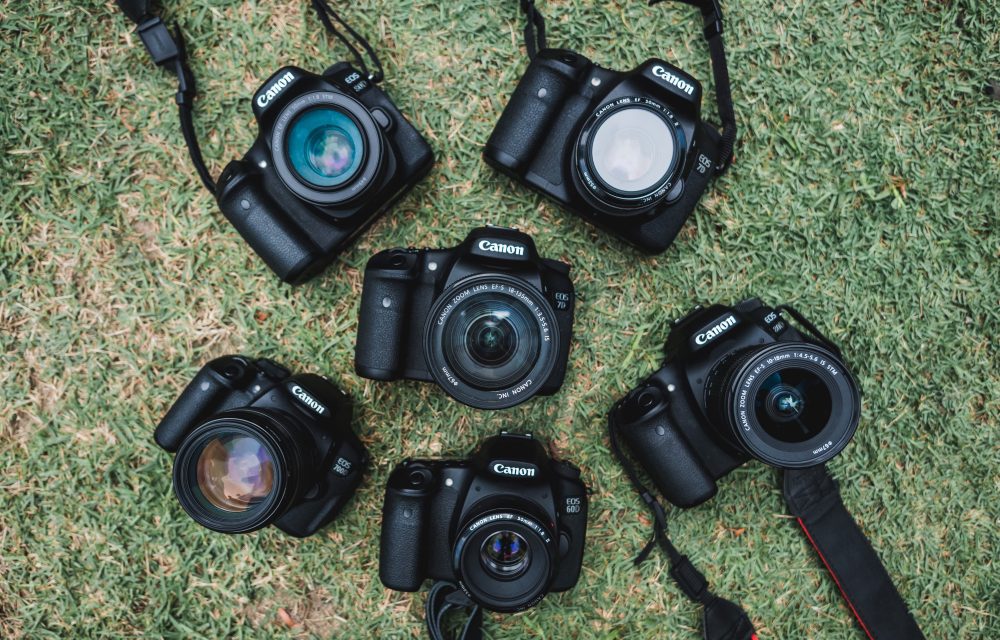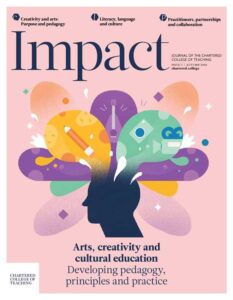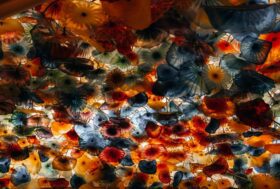Remapping photographic education

Photographic education is in limbo, and the future of its impact is hanging in the balance without change (Rubinstein, 2009). The relatively new subject (in comparison to its more traditional, academic cousins) has carved its way through traditional art education and the digital revolution and gained a rightful place in higher education. Yet now this comfortable position is compromised by its very prevalence. Accessible (and mostly entirely necessary) photography is integrated and embedded into almost every single facet of life today, and we are potentially on the brink of taking its educational place for granted by not integrating transferable and usable photographic skills into the curriculum. This article came to fruition through my own experience as a photography student and now on the other side of the chalk – as a photography educator. This was further fuelled by the Arts Council’s Photography and National Curriculum Working Party from 1994, which outlined a similar need for change 25 years ago (Isherwood and Stanley, 1994).
This paper aims to briefly address that original Arts Council publication framework in order to provide context for the proposed framework and then address the current needs of photography education in a wider context. The paper will introduce a starting point for a contemporary photographic curriculum model for Key Stages 3, 4 and 5. This will embed creative photographic skills whilst taking into consideration the need for students to be able to navigate an ever-increasingly image-saturated society. It will consider the model’s limitations and benefits and predictions of the impact of these curriculum changes. This paper is aimed at all educators who wish to embed more visual awareness, photography and creativity in their teaching, not solely those who teach it as an artistic medium. It is intended as a catalyst for discussion, rather than a simplified solution to a complex problem.
Revisiting Creating Vision and 1994
Visual literacy is not a new educational concept, yet its more formal inclusionAn approach where a school aims to ensure that all children are educated together, with support for those who require it to access the full curriculum and contribute to and participate in all aspects of school life in the newly formed National Curriculum meant that the 1990s saw an influx of academic comment and writing surrounding it (for example, see Messaris, 1994; Raney, 1999; the Journal of Visual Literacy from 1989 onwards). The definitions of visual literacy can be varied and broad, so I will be referring to visual literacy in a more simplistic sense. To focus on photography, this definition would encompass the student’s capability to derive meaning from, interpret and be confident in navigating their own and others’ use of imagery.
Digital photographic technology was in its infancy in 1994, with Kodak only inventing the megapixel sensor just eight years before. The Creating Vision publication preceded the first market digital camera by a year, and the earliest camera phones were not introduced until 1997 (Hjorth and Hendry, 2015). Despite this, the Arts Council were strongly in favour of introducing photography across the National Curriculum as both a teaching aid and a media in its own right. This was quite a bold move, given that the medium was still almost entirely analogue and somewhat limited in its sharing and creative capabilities. The Creating Vision document demonstrates that the potential of photographic education was being recognised and championed long before the digital image saturation that we know today became apparent. They discussed the need for students to be a ‘sophisticated consumer and a maker of images’ (p. 22) and that the educational models did not reflect this but concentrated mostly on their verbal and written skills. I feel that this notion has not changed 25 years on, but the world that the imagery now exists within has. Common debates focused on photography are discussed in what seems now, looking through a contemporary lens, as simplistic and somewhat naïve. The cornerstone of photographic debate – whether photographs stand to record reality or an artist’s impression of the moment – also features.

To summarise the suggested framework from Creating Vision (see Figure 1), it is vital to mention the key words that form a thread of the educational needs it was believed that photography could meet. The overall themes for inclusion in the curriculum were society, conventions and self. It suggests using photography as a media in art and design lessons, using it as a stimulus for talking and writing in English, taking photographs to understand geographical locations in geography, using historical imagery as source material in history, a less immersive and seemingly tentative suggestion of photographing scientific processes in science, and making physical cameras in technology lessons. Creating Vision mainly incorporates photography in its most raw form into the National Curriculum, as a tool for understanding meaning. This is completely reasonable at a time when educational uses of photographic visual literacy were still being understood, but the contemporary need for change needs to be examined.
A contemporary need and a contemporary solution
…so whilst millions of people take photographs, very few of the countless billions of images they produce are widely circulated… at the same time millions of people consume countless images daily in print and broadcast form, yet these images are made by a very small group of individuals.
Isherwood and Stanley, 1999
The photographic needs of the student population have changed. Photographically, students are now in need of learning skills to help them live with image consumption and saturation as we know it. These contemporary skills and understanding are in addition to the more embedded ones that we, as educators, expect to see form in the shape of visual literacy skills. Newer uses include (but are not limited to) cultural awareness, contextual awareness, imagery for self-promotion/marketing, personal digital footprints, legalities and ethics of sharing imagery, impact of image consumption, digital skills, and social media.
I feel that it is safe to conclude from reviewing Creating Vision that the original goal has been achieved. Photography is everywhere in the school environment, both in and out of lessons. It is an unavoidable technology and one that provides opportunity for creative teaching across the entire school curriculum. As mentioned, its prevalence questions the need for studying the subject on its own. I believe that the skills needed to understand and use photography should be embedded throughout most subject areas and its current undervalued use as a documentary tool questioned.
Stand-alone subject or a natural rhizome?
Learning photography in an artistic context provides endless creativity and does expose students to some of the perhaps less obvious yet necessary skills for navigating contemporary image use. It develops creative thinking, problem-solving, resilience, cultural and societal awareness around image use (depending on the educator’s choice of source material, that is) and practical image-making skills. However, developing photography as a rhizome across the curriculum rather than as a stand-alone subject, I feel, would provide students with the education to engage critically with images as well as develop and apply visual literacy safely, creatively and independently. A rhizome in philosophical terms is a process of existence that does not come from a singular point of origin, growing from everywhere. Often, a tree is used to illustrate knowledge in diagrams. This is exactly the opposite of a rhizome; once the tree is cut, it no longer exists. A rhizome can be disrupted in places yet thrive in others. To introduce a possibility of what this model could look like, I have briefly introduced part of the curriculum framework in Table 1, using the terminology presented in Figure 1. I haven’t included all subjects, as the skills required do not necessarily fit into every single area of the curriculum and it would be unsuitable to try to make them do so.
| Social sciences | Humanities | Design technology | English/drama | PSHE | Art and design | |
| MAKING | Marketing, promotion of businesses using photography and editing | Photographic re-creations, documentation and archival skills through contemporary image capture | Darkroom processes, traditional camera technology and digital image editing/design software skills | Interpret the meaning of texts through photography, explore narrative in genres of photography, photographic narrative projects | Case studies of image use that link with key themes such as misuse of social media and inappropriate image-sharing, group work/discussion points/visual outcomes | Develop creative skills and visual literacy through making photographs |
| LOOKING | Navigating the internet and social media appropriately, personal digital footprints and possible impact | In-depth analysis of photographer work and the contextual information behind imagery | Understanding the use and importance of image in design, the engineering and technology of the camera | Analyse existing photography as inspiration for writing or dramatic compositions | E-safety, digital awareness, ethical considerations, mental health awareness | Investigate work of other practitioners |
| SOCIAL CONTEXT/USE | Ability to use digital technology in employment, social situations and communication | Appreciation, understanding and knowledge of historical and geographical events and places | Digital skills are increasingly needed in workplaces, technological knowledge can help further engineering experiments and ideas | Ability to navigate visual means such as television, films and photographs, wider understanding of why imagery is used and what it is used for | Cultural and visual appreciation, wider understanding of history and place, application to wider creative fields | |
| IMPACT | Students will be informed when making decisions about sharing imagery and the possible impact, they will gain relevant skills to help them in possible future employment | Understanding historically significant codes and signs, seeking connections between events, understanding conventions, power structures and dissemination, criticality of patterns | Ability to navigate digital technologies and software, increase digital and technological skillset for possible employment, further knowledge in engineering | Develop the ability to decipher and interpret meaning appropriately in visual means, communicate own narrative or message, documentation skills | Students can develop their photographic ability through exploration of ideas and techniques whilst being informed by work of other practitioners |
Table 1: Remapping Creating Vision: A new model for photographic education
Conclusion
Of course, there are limitations and problems with this proposed model in terms of practicalities, curriculum restraints and time, amongst others. I do not intend for it to be an exact map, but food for thought. I feel that we do adapt well to societal changes in education, but I often think that it is not quick enough. The impact of preparing our students in the world of photography would not only strengthen its value as an important, necessary tool and subject but, more importantly, also impact on their resilience, confidence and strength after they fly their educational nest and navigate a wider digital world. Students would be prepared with relevant photographic skills and have developed a much wider and more in-depth visual literacy, ensuring that they can navigate through not only creative photography but any visual means that they will encounter. This paper is a short snapshot, and further research and in-depth studies are required in order to test the model and theory that it would, in fact, have a positive impact on the student population, creative teaching and society as a whole.
References
Hjorth L and Hendry N (2015) A snapshot of social media: Camera phone practices. Social Media + Society 1(1): 1–3.
Isherwood S and Stanley N (1994) Creating Vision: Photography and the National Curriculum. Manchester: Cornerhouse Publications.
Messaris P (1994) Visual Literacy: Image, Mind, and Reality. Boulder: Westview Press.
Raney K (1999) Visual literacy and the art curriculum. Journal of Art & Design Education 18(1): 41–47.
Rubinstein D (2009) Towards photographic education. Photographies 2(2): 135–142.
This article was published in September 2019 and reflects the terminology and understanding of research and evidence in use at the time. Some terms and conclusions may no longer align with current standards. We encourage readers to approach the content with an understanding of this context.










